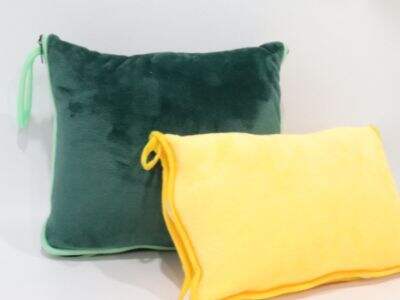Nos, a szövetek esetében két alapvető folyamatot kell megismerünk – a szövés és a gyűrítést. Ezek a folyamatok különféle típusú anyagokat eredményeznek, amelyek mindegyike részeseink a napimra. A szövés módszere: ahol a szövet két csomópontos szálrendszer átfedésével jön létre derékszögben. Ez azt jelenti, hogy egyik szálrendszer felfelé és lefelé halad, míg a másik oldaltól-oldalra. Ezek a szálak együtt alkotják a jó anyagot. A gyűrítés viszont teljesen más módja a készítésnek. A gyűrítésnél egyetlen gyapornyafonal manipulálása történik egy horgaszágú gyűrítővel, amely hurokot teremt, amelyek egymással összekapcsolódnak. A bavoll-spandex keverék az, amit ebből a módszertől kapunk; az anyag gyakran rugalmas és nagyon puha lehet.
Szövettani hajtatók típusai
Másik, megvitatjuk a különböző anyagokat, amelyeket használnak ezeknek a szövegetek alkotására. Ezeket az anyagokat anyag-szálaknak nevezzük. A szálak azok, amikből a szövetek készülnek, és minél többet tudsz a szálakról és arról, mennyire erősek és lágyak, annál többet tudsz a szövetről. Az alapvetőféle szálat, amiről tudnunk kell, a természetes szál és a mesterséges szál.
A természből ilyen szöveget természetes szálaknak nevezünk. Ezek növényekből is származhatnak, mint például a bársony és a kenő, vagy állatoktól, mint a gyapjú és a samit. A természetes szálak legjobb dologja, hogy általánosan lágyak a bőrünk mellett, jól ventillálnak, és a legtöbb esetben nagyon erősök lehetnek. A bársony például lágy és kényelmes, amiért tökéletes ruhákhoz, mint a pólók és az éjjeli ruhák.
A differenciálás során az emberek ipari településekben készítik el a műszakállakat. Ilyenek például a poliészter, a nilón és az spandex. A gyártott szakállak egy másik tulajdonsága, hogy hihetetlenül erősek, ami azt is jelenti, hogy hosszú hasznos élettartamuk van. Gyorsan szárnyalnak is, ami hasznos abban az esetben, ha ledomborodsz, könnyen tisztíthatók, amivel tökéletesek az aktív ruhák és sportruhák számára.
Fókusz a szövet stílusára és érzetére
A szövet szerkezetének és felületének részletesebb megvizsgálata sokat mondhat nekünk a szövegek minőségéről. Ez lehet a konstrukció, ami azt jelenti, hogyan készítik a szöveget, de legfontosabb – a szál-szám. Ez azt mutatja, hogy hány szál van összesen egy négyzetinches területen. Ha nagyobb a szál-szám, akkor általában erősebb a anyag, és hosszabb ideig tart. Vegyük a hordókat:
nagyobb szál-számmal rendelkezők általában mázsábbak és erősebbek.
A textúra felülete is nagy szerepet játszik. Felület – Azt, hogyan érezze meg valójában a textúra a érintésre. Sűrűbb és vastagabb textúrák általában stabilebbek, ami kevesebb öregséget eredményez idővel. Ellenkezően, szabadon összefűzött textúra jól lélegzel, és úgy érezhető, hogy kisebb súlyú is, ami különösen vonzó, amikor forró van kint.
Színek és minták figyelése
Textúrák számos színben és tervezetben érhetők el, és el kell ismerned ezeket a különbségeket. Kicsi különbségek a színekben és témákban továbbá sokat mondhatnak a textúra minőségéről. Ha a textúra erős színeket és konzisztens, biztos terveket tartalmaz, akkor magas minőségű a textúra, mivel a színek tisztességesek és fényesek. Ellentétben, alacsonyabb minőségű textúrák elhomályosult színeket vagy nem egyformát mintázatokat tartalmazhatnak. Ezért a textúra kevésbé vonzónak fog látszani, és csökkentheti rugalmasságát.
Minőségi textílek az érintés mentén azonosítása
A érintésünk használata a megkülönböztetéshez egyik másik kulcsfontosságú módja a szövegetek felismerésére. A szöveg érintési élménye gyakran tükrözi annak minőségét. Például, a magas minőségű anyagok általában olyan érzést okoznak, mint a lágy, sima és valahogy luxusos érintés. Sokan közöttünk szeretjük viselni ezeket a szövegeteket, mivel élvezetes az érintésük a bőrön. Másrészt, a magasabb minőségű szövegek durva, homályos vagy erős lehetnek, ami hosszabb idő alatt viselhetetlenné teheti a viselést.
EDITEX Anyái
Az EDITEX olyan hitben alapított, hogy csupán a legjobb anyagokat kell használnunk a magas minőségű szövegek készítésére. Hiszünk abban, hogy jó dolgokhoz idő kell, és óvatosan választjuk ki a természetes és mesterséges szálat, hogy szövegeink erősek és érintésbiztosak legyenek. Szövegeinket olyan környezetbarát folyamaton keresztül termeljük, amely biztosítja, hogy erősek maradjanak és éveken keresztül fenntarthatóan maradjanak meg a megjelenetük.
Szövegetekünk továbbá egy összefűzési/kötési vegyes anyag. Ez azt jelenti, hogy készen állunk különböző anyagokat és terveket alkotni, ami segít arra, hogy szövegetekünk kiemelkedjenek. Ez átfordul jelentős, egységes színnel, amely estétikusan elégedett és alkalmas különböző alkalmazásokra, például hazai díszítésre és ruházatra, valamint vonzó tervrajzokra, amelyek vizuális érdeklődés feszítő elemét kínálnak.

 HU
HU







































